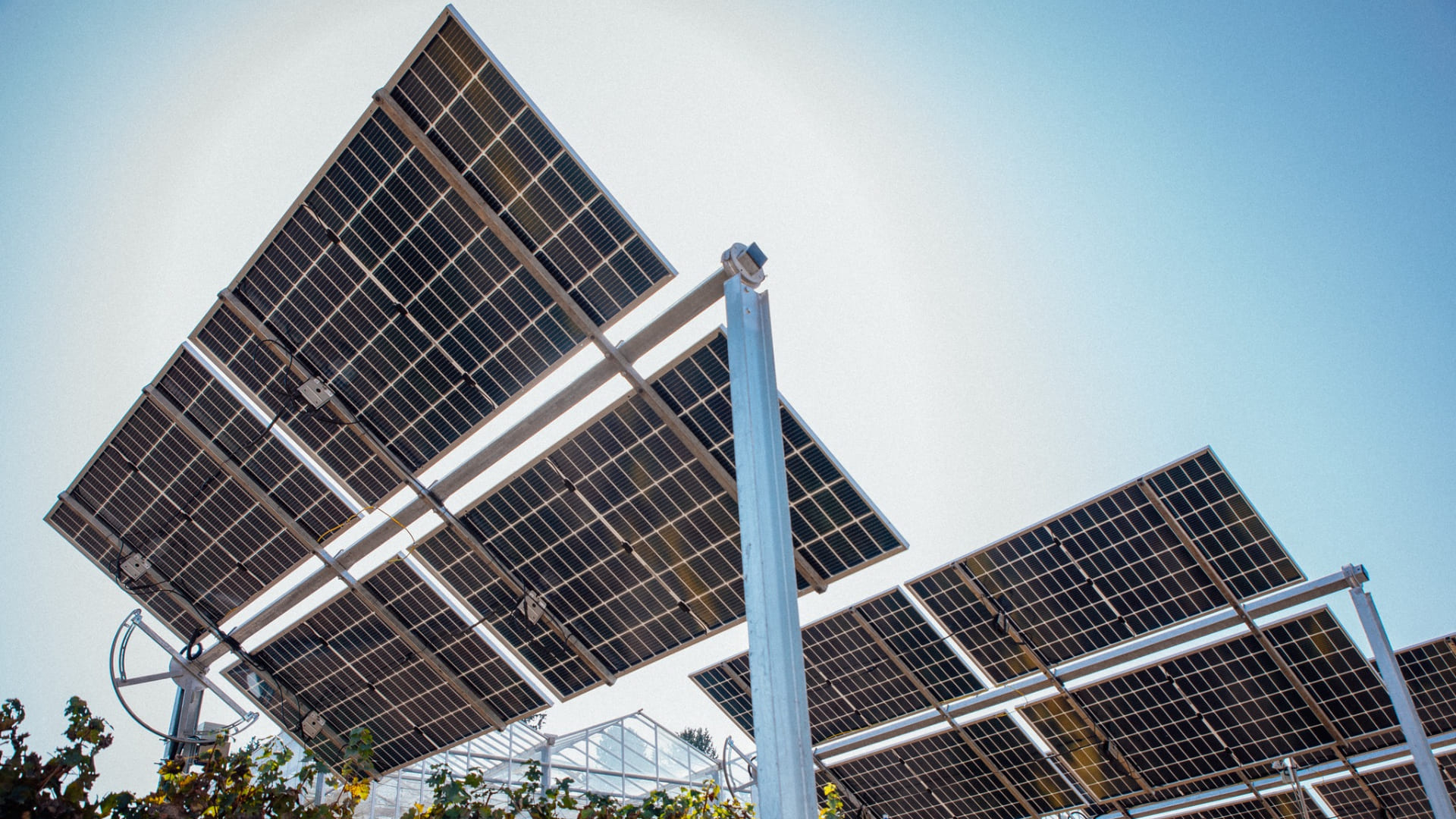
It will be an important year for agricultural entrepreneurs who wish to innovate their activities. The new Agrivoltaic call for proposals is aimed at:
- Agricultural entrepreneurs (individuals or associates in corporate form);
- Consortia;
- Agricultural cooperatives and temporary associations of agricultural businesses.
The call offers the possibility to implement innovative systems with a particular focus on integrating innovative agrivoltaic solutions. The combination of grants and production incentives facilitates green technologies and the production of clean energy in harmony with traditional agricultural activities. A distinctive feature of this measure is the respect for crops. The systems are designed with photovoltaic modules installed at a considerable height from the ground. This choice aims to preserve the continuity of agricultural and pastoral activities, ensuring a harmonious coexistence between energy production and traditional agricultural practices.
Agrivoltaic Call for Proposals: What Are the Benefits?
Agrivoltaic systems will be incentivized through a combination of capital grants and incentivized tariffs. Specifically, a capital grant of 40% of eligible costs will be provided. At the same time, an incentivizing tariff will be applied to the production of net electricity fed into the grid for a period of 20 years.
New Agrivoltaic Call for Proposals: Eligible Expenses
The eligible expenses for receiving the benefits of the call include:
- Implementation of advanced agrivoltaic systems: The investment encourages the experimentation of cutting-edge technologies, contributing to the evolution of the agricultural sector toward more sustainable practices.
- Supply and installation of storage systems: This intervention will allow energy to be stored during periods of overproduction, ensuring continuous supply even in the absence of solar radiation, contributing to an efficient and resilient energy management system.
- Monitoring system equipment, including functional informational programs for plant management: This approach will optimize performance by promptly identifying any anomalies and maximizing the productivity of the system.
Incentive tariff
- Connection to the national electricity grid: This will allow agricultural entrepreneurs to actively participate in the energy market, selling excess energy and generating additional sources of income.
- Construction works strictly necessary for the implementation of the intervention: These works represent a targeted investment to ensure the stability and safety of the entire agrivoltaic system. Through this eligible expense, agricultural entrepreneurs will be able to design and build structures that support the height of the photovoltaic modules, thus ensuring the continuity of agricultural activities beneath them.
- Purchase, transportation, and installation of machinery, plants, and hardware/software equipment, including installation and commissioning costs: This aspect of the call supports the acquisition of machinery, plants, and equipment necessary for the implementation and operation of the agrivoltaic system. Installation and commissioning will also be eligible.
- Pre-feasibility studies, design, work management, safety, technical and/or technical-administrative testing, consulting, and/or technical-administrative support: This eligible expense will allow for the efficient and safe implementation of the system, minimizing risks and maximizing long-term performance. Safety and regulatory compliance are a priority, ensuring a safe working environment in accordance with current regulations. Consulting and technical-administrative support add value in the overall project management, offering specialized skills to ensure the success of the intervention.
Project Features
The design features of agrivoltaic systems include the minimum height of the modules above the ground. This height must allow the continuity of agricultural and livestock activities under the photovoltaic modules.
The minimum values are set as follows:
1.3 meters for livestock activities and agrivoltaic systems with modules in a fixed vertical position.
2.1 meters for crop activities, allowing the use of machinery suitable for cultivation.
Ciesse with  offer their expertise to provide a complete technical intervention and guide agricultural entrepreneurs through the complexity of the process, facilitating the implementation of agrivoltaic projects.
offer their expertise to provide a complete technical intervention and guide agricultural entrepreneurs through the complexity of the process, facilitating the implementation of agrivoltaic projects.
Credit Photo: SolarEdge